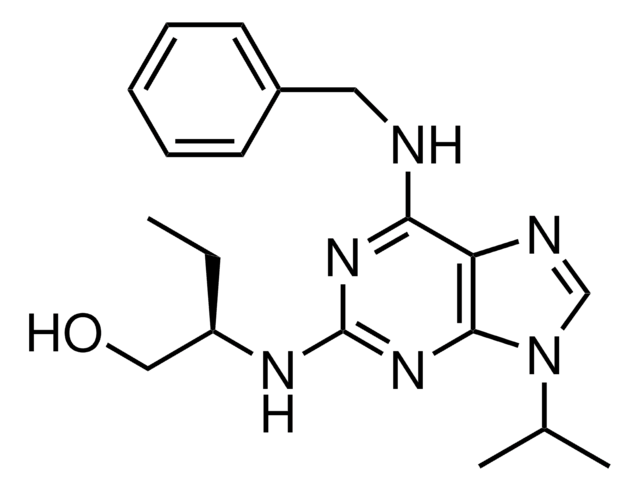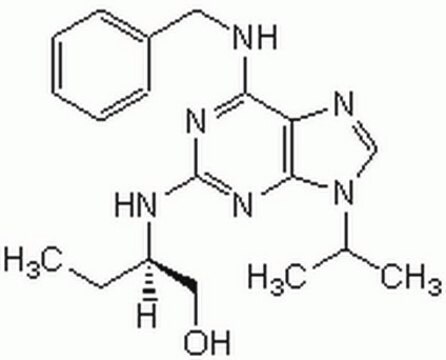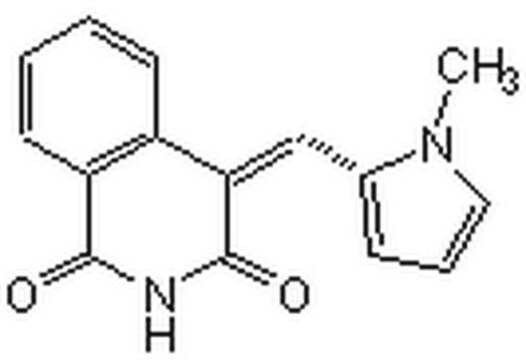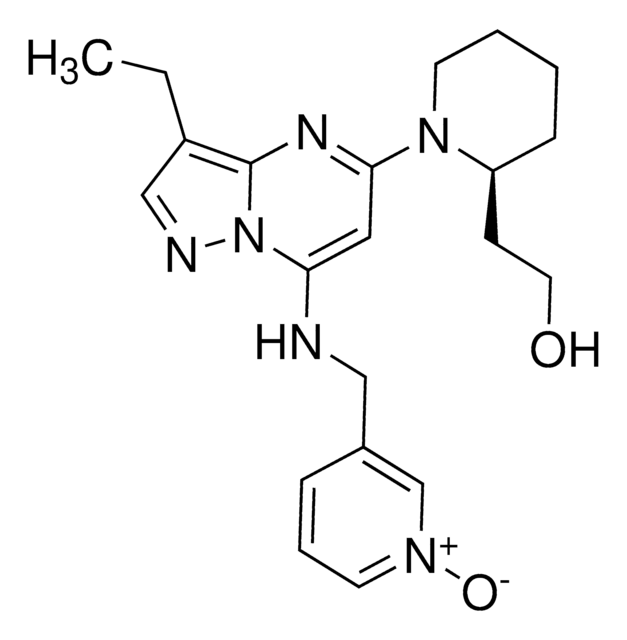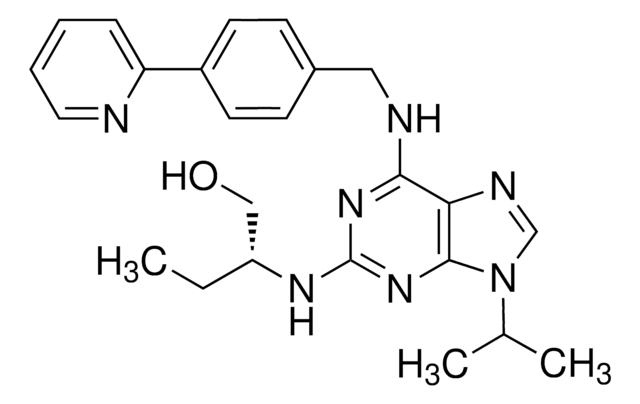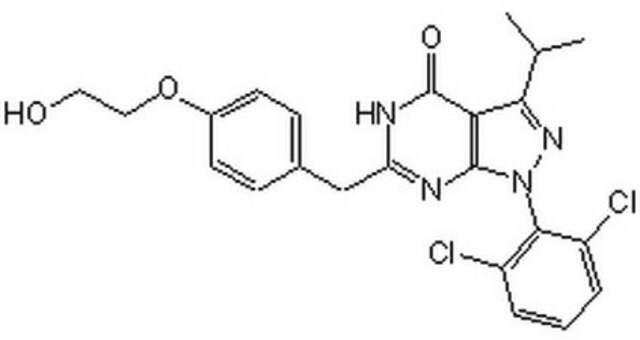557360
Roscovitine
≥95% (HPLC), solid, Cdk inhibitor, Calbiochem®
Synonym(s):
Roscovitine, 2-(R)-(1-Ethyl-2-hydroxyethylamino)-6-benzylamino-9-isopropylpurine, Cdk7 Inhibitor I
About This Item
Recommended Products
product name
Roscovitine, A potent, reversible, and selective inhibitor of Cdks that exhibits about 10-fold greater efficacy towards p34-cdk1 and p33-cdk2 and 20-fold greater efficacy towards p33-cdk5 relative to Olomoucine.
Quality Level
Assay
≥95% (HPLC)
form
solid
manufacturer/tradename
Calbiochem®
storage condition
OK to freeze
color
white to off-white
solubility
DMSO: 10 mg/mL
shipped in
ambient
storage temp.
−20°C
InChI
1S/C19H26N6O/c1-4-15(11-26)22-19-23-17(20-10-14-8-6-5-7-9-14)16-18(24-19)25(12-21-16)13(2)3/h5-9,12-13,15,26H,4,10-11H2,1-3H3,(H2,20,22,23,24)/t15-/m1/s1
InChI key
BTIHMVBBUGXLCJ-OAHLLOKOSA-N
General description
Biochem/physiol Actions
p34cdk1/cyclin B
Warning
Reconstitution
Other Notes
Meijer, L., et al. 1997. Eur. J. Biochem.243, 527.
Meijer, L., et al. 1996. Trends Cell Biol. 6, 393.
Rudolph, B., et al. 1996. EMBO J. 15, 3053.
Legal Information
Storage Class Code
11 - Combustible Solids
WGK
WGK 3
Flash Point(F)
Not applicable
Flash Point(C)
Not applicable
Certificates of Analysis (COA)
Search for Certificates of Analysis (COA) by entering the products Lot/Batch Number. Lot and Batch Numbers can be found on a product’s label following the words ‘Lot’ or ‘Batch’.
Already Own This Product?
Find documentation for the products that you have recently purchased in the Document Library.
Our team of scientists has experience in all areas of research including Life Science, Material Science, Chemical Synthesis, Chromatography, Analytical and many others.
Contact Technical Service